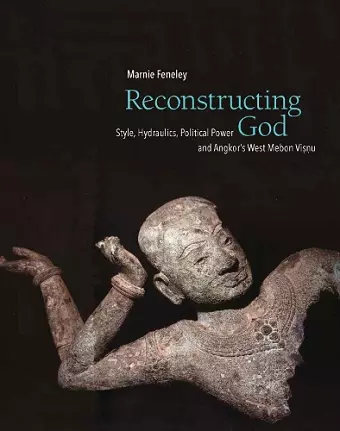Reconstructing God
Style, Hydraulics, Political Power and Angkor's West Mebon Visnu
Format:Hardback
Publisher:NUS Press
Published:31st Aug '23
Should be back in stock very soon

A fully illustrated archaeological and art historical analysis of one of the most important artworks of Angkor, rewriting the chronology of the royal capital.
In December 1936, a villager was led by a dream to the ruins of the West Mebon shrine in Angkor where he uncovered remains of a bronze sculpture. This was the West Mebon Visnu, the largest bronze remaining from pre-modern Southeast Asia, and a work of great artistic, historical, and political significance. Prominently placed in an island temple in the middle of the vast artificial reservoir, the West Mebon Visnu sculpture was an important focal point of the Angkorian hydraulic network. Interpretations of the statue, its setting, date, and role have remained largely unchanged since the 1960s—until now. Integrating the latest archaeological and historical work on Angkor, extensive art historical analysis of the figure of Visnu Anantasayin in Hindu-Buddhist art across the region, and a detailed digital reconstruction of the sculpture and its setting, Marnie Feneley brings new light to this important piece. Highly illustrated, the book will be of interest to art historians and curators, historians of Southeast Asia, and anyone curious about the art and history of Angkor.
If Angkor Wat is the greatest temple mausoleum at Angkor, the gilded bronze Visnu is the greatest statue. Fully six metres long, the date and significance of this remarkable artefact has been much debated since its discovery in 1936. In this superb volume, Marnie Feneley has concluded that it was Suryavarman II, one of Angkor's greatest sovereigns, who ordered the reclining Visnu to be placed in the island temple in the midst of the huge Western Baray. This minutely documented and generously illustrated book illuminates like no other, the vital nexus linking royal intercession with Visnu to ensure through the control of water, the wellbeing of the kingdom."—Charles Higham, Emeritus Professor, University of Otago
"By skillfully navigating the realms of art history and archaeology, Feneley breathes life into the past through the medium of digital technology. Her groundbreaking work on the West Mebon Viṣṇu exemplifies a vision and commitment to preserving and showcasing cultural heritage in captivating detail with extensive scholarly research at its fundament. Reconstructing God is an essential text for the next generation of digital humanists."--Sarah Kenderdine, Professor of Digital Museology, École polytechnique fédérale de Lausanne
"This beautifully illustrated volume is the most thorough study of a single Cambodian masterpiece ever undertaken.Interdisciplinary in approach, it offers insights into Khmer aesthetics, Angkor's cultural landscape, and the chronology of a unique sculptural tradition."—Paul Lavy, Assistant Professor of South and Southeast Asian Art History, University of Hawaii
"Feneley's critical analysis of jewelry and dress, brings Angkor's largest bronze forward to the city's 12th century apogee, when it rivalled the scale of China's capital, by redefining the 6m reclining Viṣṇu as a Śivaliṅga replacement on West Mebon island by the empire-builder King Sūryavarman II, who revived Viṣṇu veneration after three centuries of Śaivism and constructed Angkor Wat, the largest and Hindu temple on earth, partly on the foundations of an earlier Śaiva temple."—Peter D. Sharrock, SOAS, London
"Dr. Feneley's book makes an important contribution to the study of Classical Southeast Asia. In it she tackles one of the most enigmatic and unique sites in all Cambodia. Using new archaeological discoveries and recently deciphered ancient inscriptions, the author argues for a new date for one of Cambodia's most iconic sculptures, the reclining Vishnu statue found on a small island in the western reservoir at Angkor. This is one of the most important feats of bronze casting ever created in Southeast Asia. Though it is now in fragments, she creates a computerized reconstruction of its original form. In addition to its religious symbolism, the statue may have had functions related to regulating the water in the reservoir. Drawing conclusions from this statue and its site, Dr. Feneley uses data from recent archaeological excavations to build a strong case for the conclusion that Angkor's kings were directly involved in planning water management in ancient Angkor, where water works were among the most sophisticated in the ancient world. She then takes another step forward by reinterpreting the relationship between agriculture and religious symbolism in what was the most centralized of all premodern Southeast Asian kingdoms. This publication constitutes a significant step forward in our understanding of the integrated nature of Angkor's art, water management, and society."—John Miksic, Professor Southeast Asian Studies, National University of Singapore)
ISBN: 9789813250536
Dimensions: unknown
Weight: 363g
256 pages